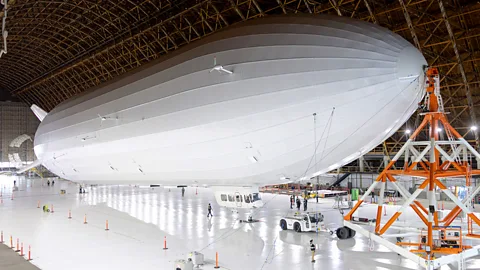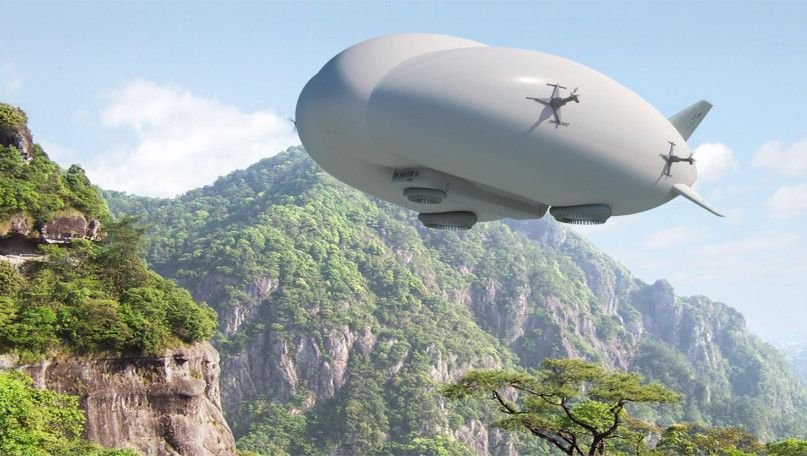In a world seeking sustainable and efficient alternatives to traditional aviation, airships are making a compelling comeback. With advanced propulsion systems and cutting-edge materials, these graceful giants of the sky are stepping into roles that no other aircraft can perform. From transporting large cargo to remote areas to offering zero-emission tourism experiences, airships are once again proving their worth in the 21st century.
Why Airships?
Airships are uniquely suited for operations where conventional aircraft and road transport fall short. Their ability to take off and land vertically (in some cases), hover for long periods, and carry heavy or oversized loads makes them invaluable for tasks like delivering wind turbine blades to hilly or isolated regions.
Modern airships also benefit from significantly lower carbon emissions compared to helicopters or airplanes, making them a key candidate in the aviation industry’s quest for decarbonization.
Major Developments in 2024–2025
AT2 Aerospace – Z1 Airship (USA)
Launched by Lockheed Martin through its spinoff AT2 Aerospace, the Z1 Airship represents a modern evolution of hybrid airship technology. With a triple-hull design, it stretches 91 meters in length and boasts a 20-ton payload capacity.
The Z1 borrows from the design principles of Lockheed’s earlier P-791, a semi-buoyant, tri-lobe airship. Like its predecessor, the Z1 derives lift both from helium and aerodynamic surfaces, enabling enhanced efficiency and operational range.
Airlander 10 – Hybrid Air Vehicles (UK)
The Airlander 10, long in development, is finally heading toward full-scale production. At 92 meters long, it is poised to enter service by 2029, with a new facility in Doncaster, UK capable of producing 24 airships annually. This initiative is expected to create 1,200 local jobs and generate £1.2 billion in annual sales.
Confirmed orders include:
- 20 craft for Air Nostrum (Spain)
- Several units for French ecotourism company Grands Espaces
- 6 airships for the Highlands and Islands Transport Partnership, aimed at improving connectivity across the Scottish Isles
AVIC AS700 – Xiangyun-Class (China)
In August 2024, China achieved a new aviation milestone with the AVIC AS700, completing a trans-provincial airship flight over 1,000 km. Classified as a medium-sized non-rigid airship, the AS700 is 48 meters long, can carry 9 passengers, and is operated by a single pilot.

Key features:
- VTOL and STOL capabilities via articulated ducted fans
- Multi-layer composite envelope for durability and helium retention
- Certified by the Civil Aviation Administration of China—the first of its kind in the nation
Initially targeted for low-altitude sightseeing, the AS700 is expected to expand into roles such as emergency response, urban services, and potentially even luxury travel. Over 10 units have been ordered, with one already delivered in South China.
Pathfinder 1 – LTA Research (USA)
Perhaps the most ambitious airship project today, Pathfinder 1 is being developed by LTA Research, backed by Google co-founder Sergey Brin. At 124.5 meters, it is now the largest airship in the world, surpassing the length of three Boeing 737s.
On October 24, 2024, Pathfinder 1 successfully completed its first untethered outdoor flight, marking a pivotal moment for rigid airship technology—which had largely vanished since the Hindenburg disaster.

Highlights include:
- Helium-based lift (no hydrogen)
- 12 electric motors for thrust, with 180° articulation
- Lidar-based helium monitoring for real-time safety feedback
- Staggered propulsor layout and X-shaped tail fins for improved control and durability
- Innovative suction and air cushion landing systems, aiming for ground crew-free mooring
The Future of Flight
The resurgence of airships isn’t a nostalgic return—it’s a practical response to today’s transportation and climate challenges. From eco-tourism to remote cargo delivery, these modern airships blend the elegance of the past with the innovation of the future.
With nations and companies investing heavily in airship development, we may soon see the skies dotted with these silent, majestic vessels once again—ushering in a new era of sustainable aviation.
